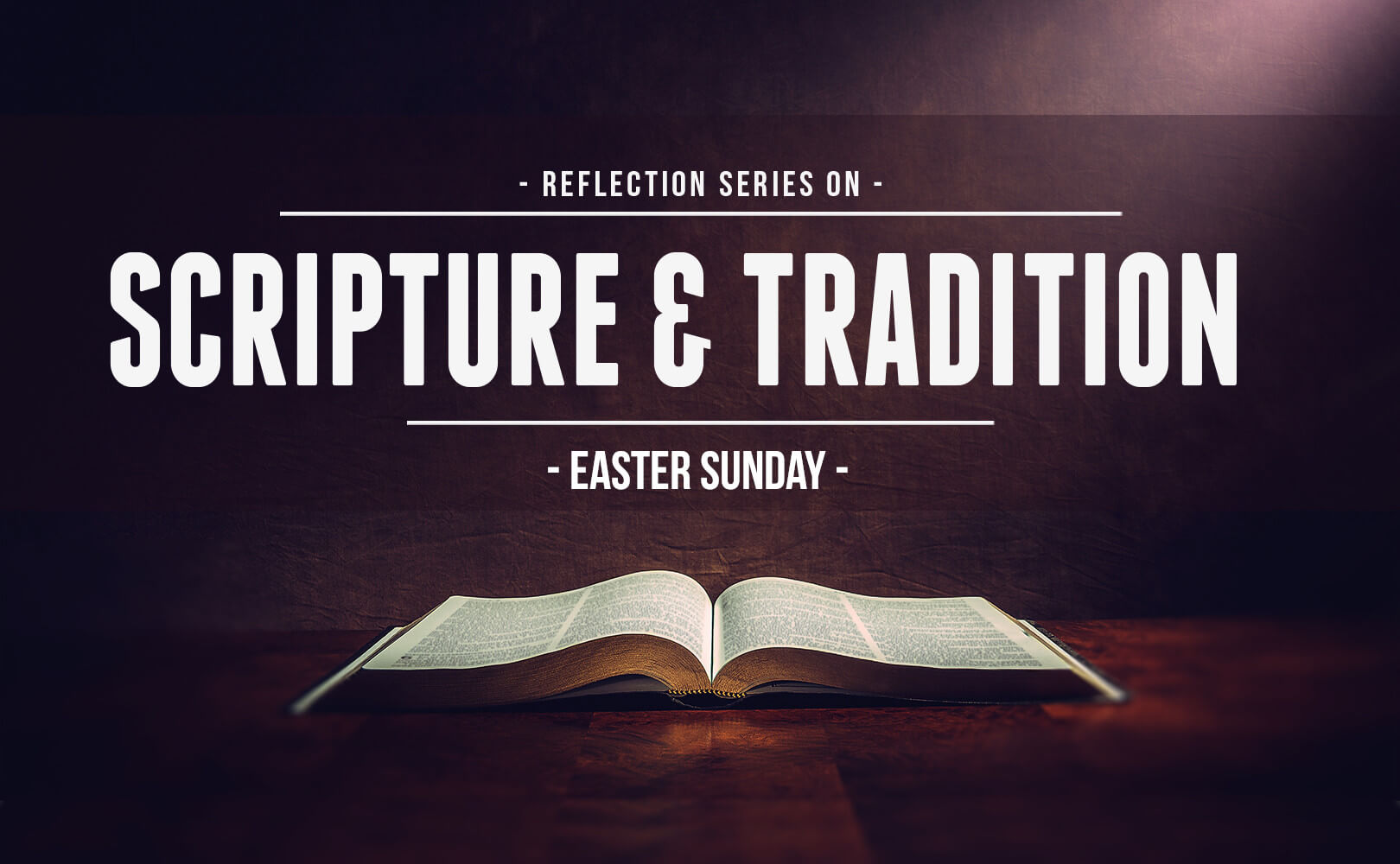Epistle: 1 Corinthians 5:7-8
Gospel: Mark 16:1-7
O God, who on this day, through Thine only-begotten Son, hast conquered death, and thrown open to us the gate of everlasting life, give effect by Thine aid to our desires, which Thou dost anticipate and inspire.
– From the Collect for Easter Sunday
The long wait is over: Easter has arrived. He is Risen! For forty days (even longer if we count back to Septuagesima) we have been in a penitential mood, making sacrifices and offering them in union with, as St. Paul says, “Christ our Pasch [who has been] sacrificed.” Now, as the Apostle tells us, “let us feast.” As an early Church father put it, “The sacrifice comes first, and then it is possible to make the transition from the old life to the new” (Ambrosiaster, Commentary on Paul’s Epistles).
Easter truly represents a “new life.” Like Christ, who died and then rose to new life, we too died during Lent in order to rise at Easter. For Lent is meaningless without Easter; in fact, it is worse than meaningless—without Easter, Lent is just masochism. But as we arrive at Easter, we know that Christ is risen indeed.
Sunday’s Gospel tells the most important, most miraculous story in the history of humankind. Yet we can’t help but think that St. Mark (and all the Gospel writers) leave so much out. There is no retelling of Christ descending into Hades, or his actual Resurrection in the tomb, or the stone being rolled away. St. Mark simply tells us that Mary Magdalene and some other women come to the tomb to anoint the dead body of Jesus, only to find the stone rolled away and the tomb empty. An angel tells them that Jesus has risen and that they must tell his disciples.
Why do the Gospels say so little about the actual Resurrection? Skeptics through the centuries have claimed it is because it’s a made-up story, and so the Gospel writers skip over the details because they have no details. But of course the opposite is true. If the early Christians were making up the story of the Resurrection, they would surely have added details in order to make it more believable to their followers.
St. Mark and the other Evangelists leave aside the details of the Resurrection because ultimately it is a profound mystery. Not a mystery in the modern sense—a puzzle to be solved. No, it is a mystery in the ancient Christian sense—a truth that’s beyond human comprehension. Though its truth is indisputable, its meaning cannot be fully understood. Christ’s Resurrection was not simply the reanimation of a dead body; such things have happened before and can be explained by science (although never after three days in a tomb). Even the raising of Lazarus, miraculous though it was, ultimately was just a reanimation of a dead body. But the Resurrection of Jesus is so much more.
As we see from the post-Resurrection accounts, Christ’s resurrected body is the same body as before his death, yet different as well. He passes through locked doors (Jn 20:19, 26); he is at times unrecognizable (Lk 24:16; Jn 20:14); and he is able to ascend into Heaven (Acts 1:9). The Resurrection transformed Christ’s human body into a glorified body. Such a transformation is a deep mystery, one that is unable to be explained in human words. And so the Gospel writers do not even try to do so. Instead they focus on the impact of the Resurrection on the first disciples: Mary Magdalene’s sheer joy (Jn 20:16), Peter and John’s anxiousness to believe (Jn 20:3-9), and Thomas’s initial doubt that is transformed into reverent worship (Jn 20:24-28).
While we will never comprehend the mystery of the Resurrection, we know it has a dramatic, life-changing impact on each one of us. For the Resurrection has destroyed man’s greatest enemy: death. As St. Augustine preached, “He died, but he vanquished death; in himself he put an end to what we feared; he took it upon himself and he vanquished it, as a mighty hunter he captured and slew the lion. Where is death? Seek it in Christ, for it exists no longer; but it did exist and now it is dead. Of life, death of death!” (Sermon 233.3-4).
St. Paul says it best, when he triumphantly writes,
O death, where is thy victory? O death, where is thy sting?
Now the sting of death is sin: and the power of sin is the law.
But thanks be to God, who hath given us the victory through our Lord Jesus Christ.
(1 Cor 15:55-57)
Death has been defeated! Christ is Risen! Alleluia!


